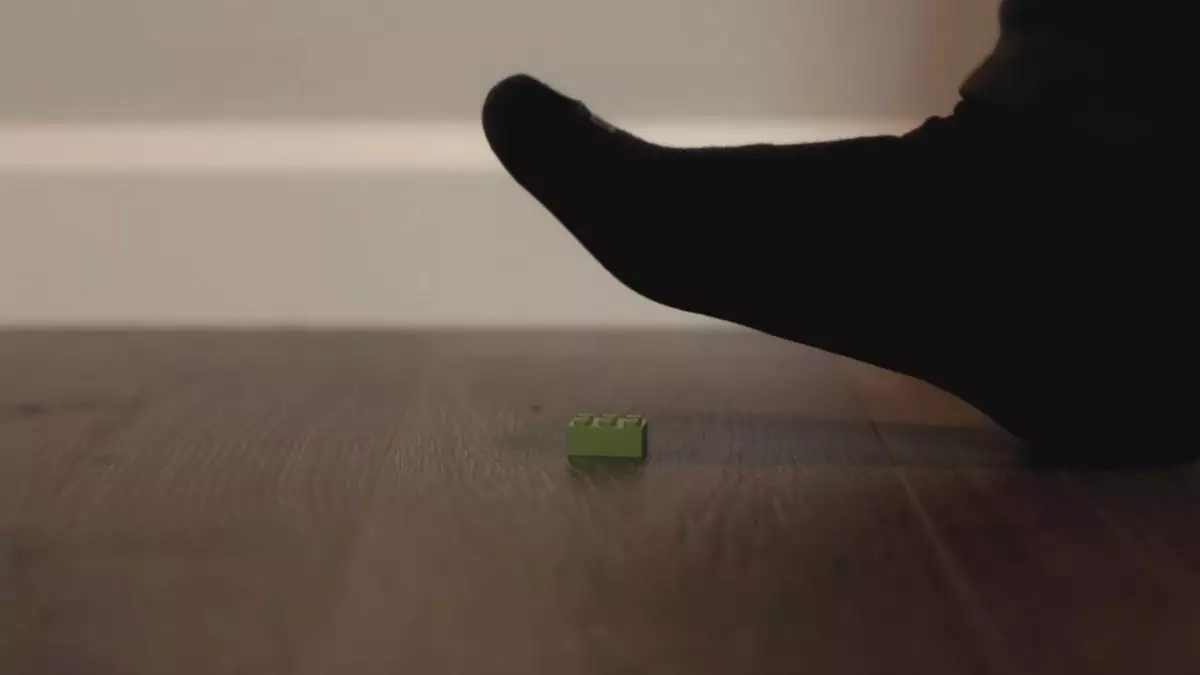In a world where scientific inquiries can sometimes feel overly complicated, YouTuber Nate Scovill decided to explore a burning question that many can relate to, though few would dare to examine with such precision: which LEGO brick inflicts the most pain when stepped on? Taking a humorous yet decidedly scientific approach to a universally lamented childhood pain, Scovill embarked on a quest equipped with a test rig designed to simulate the pressure of a human foot.
Scovill’s foray into this peculiar aspect of childhood suffering highlights the often-overlooked facet of home life—the trivial objects we encounter daily can have profound effects on our well-being. The idea to test the pain of stepping on LEGO bricks is not merely whimsical; it serves as a metaphor for the deeper frustrations we encounter in life. Many can recall the sharp surprise of stepping on a rogue LEGO piece in the dark, triggering not just physical pain, but a flood of emotional responses ranging from annoyance to nostalgic reminiscence of childhood playtime.
Understanding this emotional backdrop enriches Scovill’s analytical endeavor. His motivation is laced with humor and an understanding of human experience, setting the stage for an entertaining yet insightful examination of a mundane, if painful, reality.
Scovill’s decision to eschew stepping on LEGO himself in favor of a controlled experiment is both clever and telling. Using a test rig that mimics his own weight allows for a more standardized approach, ensuring that results can be replicated or disputed in the future. However, the slight twist behind this decision—a desire to avoid potentially humiliating online exposure—adds a layer of charm and relatability to the scientific exploration.
The choice of tools is intriguing: cardboard squares to assess the “gradient of damage” reflect both creativity and limitations of a DIY approach. While the rigorous application of the scientific method might seem compromised at times—evidenced by the mishap with the ballistics gel foot—the overall spirit of discovery remains intact. Scovill’s inventiveness offers a fresh perspective on the seriousness of experimental design in a non-traditional domain.
Unsurprisingly, the results of his experiment yield some fascinating insights. Scovill’s discovery of an old LEGO wheel’s propensity to puncture is not merely noteworthy; it also underlines an important aspect of toy design and safety standards. The notion that some LEGO pieces could pose a potential health risk when left for unsuspecting feet to stumble upon is a real consideration for many parents and manufacturers. His findings serve as a reminder that even our beloved childhood toys carry unforeseen consequences, further enhancing the narrative of nostalgia intertwined with cautionary lessons.
Scovill’s use of ballistics gel as a foot stand-in also demonstrates an interesting intersection of pop culture references—drawing inspiration from Mythbusters—while simultaneously showcasing a practical understanding of materials. The gel’s vulnerability to sharp objects echoes a common theme in experimental science: the unexpected challenges that can derail even the most notable methodologies.
Nate Scovill’s scientific breakdown of the pain associated with stepping on LEGOs is a surprisingly relatable narrative that blends humor, science, and the shared human experience. By tackling such an innocuous yet painful topic, Scovill highlights not just the discomfort of childhood play, but also the complex relationship we share with objects that elicit both fond memories and frustration.
While the journey may have been somewhat unorthodox, the overarching message could resonate far beyond the confines of the LEGO universe. It invites audiences to embrace the sometimes painful, sometimes joyful aspects of the very toys that defined our childhoods, reminding us that even the simplest inquiries can lead to revelations about our lives and experiences. Thus, we salute Scovill’s quirky venture into science—an exploration that went beyond mere entertainment to touch upon the deeper, sometimes sharp, realities of our existence.

